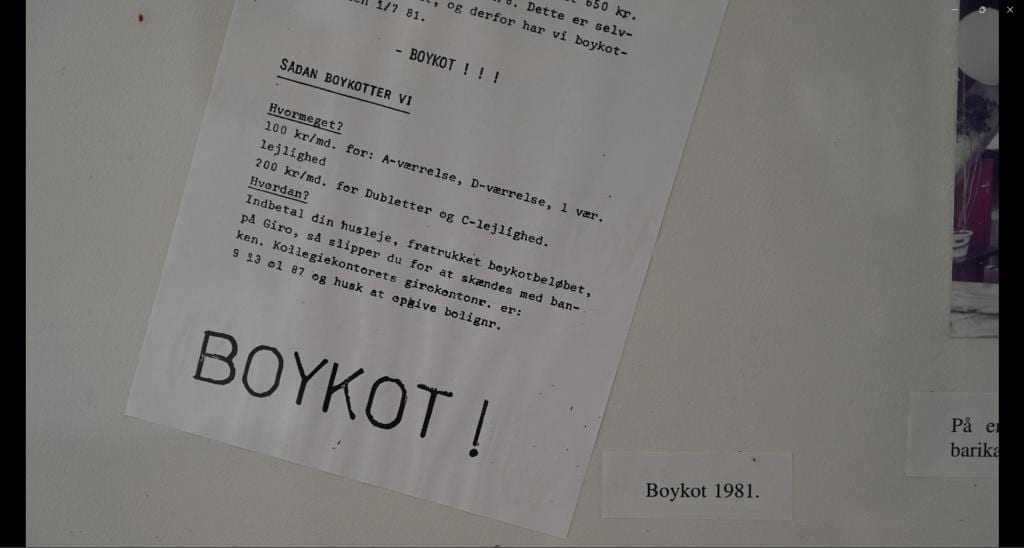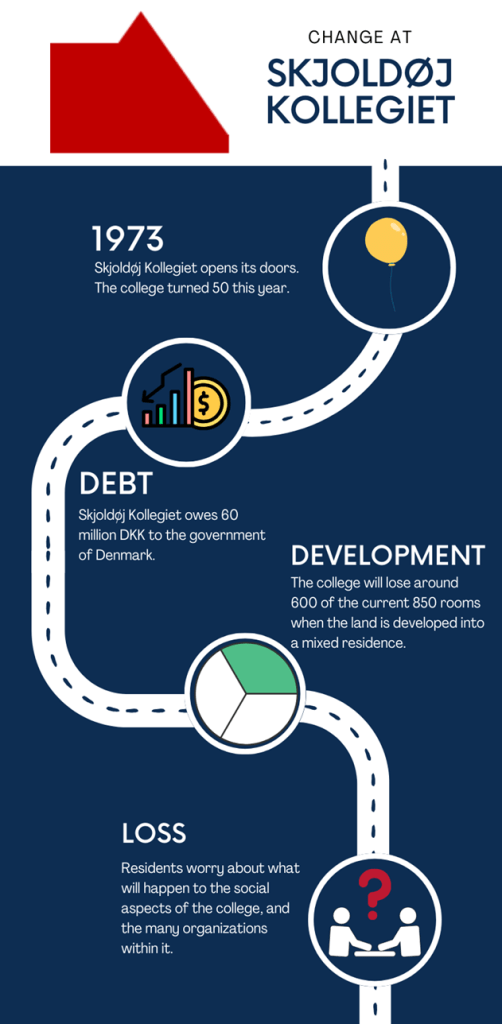Jozi Harty
Skjoldhøj college in Aarhus celebrated its 50th anniversary this past weekend amidst plans to have the dorms developed into a mixed urban area.

Brutalism of the 70s: a portion of Skjoldhøjkollegiet, completed by a decorative installation created in the 1970s by Kasper Heiberg
Image: Justin Fung
The college, known to Danes as Skjoldhøjkollegiet, has 847 rooms making it Denmark’s second largest. The dorms celebrated their 50th anniversary this past Saturday with many of its past residents returning to reminisce in the iconic student-associated dorms and hear the music of their youth. However, with a debt of 60 million DKK and a growing population of families and adults, the college has made plans to be developed by Kilden and Hindby into a mixed urban housing area within the next 10-15 years.
Mads Runderstrøm, chairman of Skjoldhøj’s board and reidents council, said that “the 50th celebration was a chance for people who lived out here to come back and relive the good old days”. The celebration featured performances from artists who found their feet at Skjoldhøj. Among them was Peter A.G of ‘Gnags’, a Danish band that rose to popularity in the 80s.

Nostalgia: Peter A.G performing on stage at Saturday’s 50th celebration of Skjoldhøj
Image: Frederik Poulsen
Despite this excitement, Runderstrøm explains that “today the dorms are in a huge debt and we had to find a solution”. He says the debt began to form in the 1980s as “[Skjoldhøj] had to raise the rent and the residents decided to boycott in protest”.


“BOYKOT!” – a display by Frederik Poulsen shown at the 50th celebration.
Top: a copy of “Husleje-Aktionerne på Skjoldhøj” a book on the boycotts at Skjoldhøj
Bottom: a poster encouraging the boycott of 1981
Image: Justin Fung
As a way to curb this debt, whilst preserving a culturally significant residence, Skjoldhøj has partnered with Kilden and Hindby to be developed into a residence with homes for all ages. Currently this plan is known as ‘Skjoldhøj 2.0’ and will have only a third of the rooms currently available.
Runderstrøm says, “It’s the best solution otherwise we would have to tear it all down. The other prospective investors initially planned to do that, but they found that many of the buildings here are culturally protected because they are some of the last brutalist buildings left in Denmark, so they’re quite unique”.
Residents, however, worry about what this change may mean for the current youthful culture that Skjoldhøj boasts. Naja Nielson, who has resided at the college for 5 years, says “a big part of why I live [at Skjoldhøj] is the charm of the social life and the culture”. She says, “it’s fine that they want to renovate it but the fact that it has to be mixed may ruin the charm of the place”.

Social: the college’s residents enjoy a chat outside their rooms
Image: Justin Fung
Another resident of 3 years, Wiktoria Szulc says: “Sadly it needs the change. Already there are a lot of families here and the buildings are not meant for them, but I think it will change a lot. The dynamic right now is so specific to younger generations. When more families move in, I think it will dim the social side of Skjoldhøj because families don’t want the student life”.

Video: https://youtu.be/iXXbE5xaodA. JUSTIN FUNG